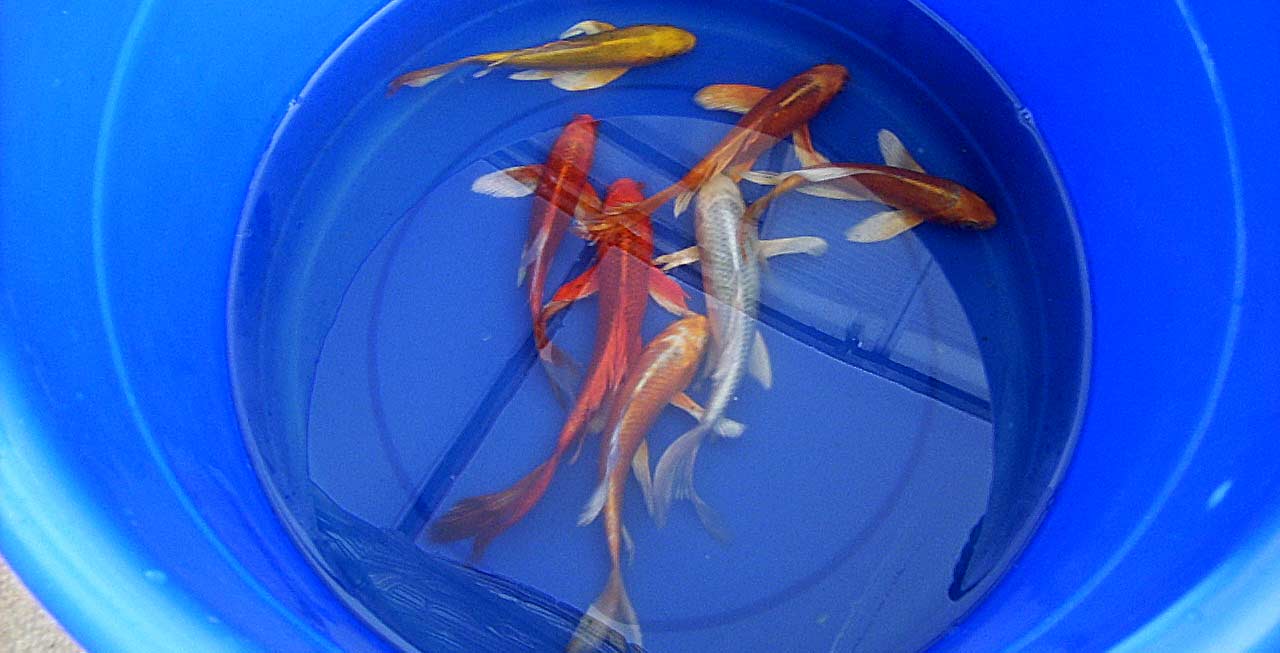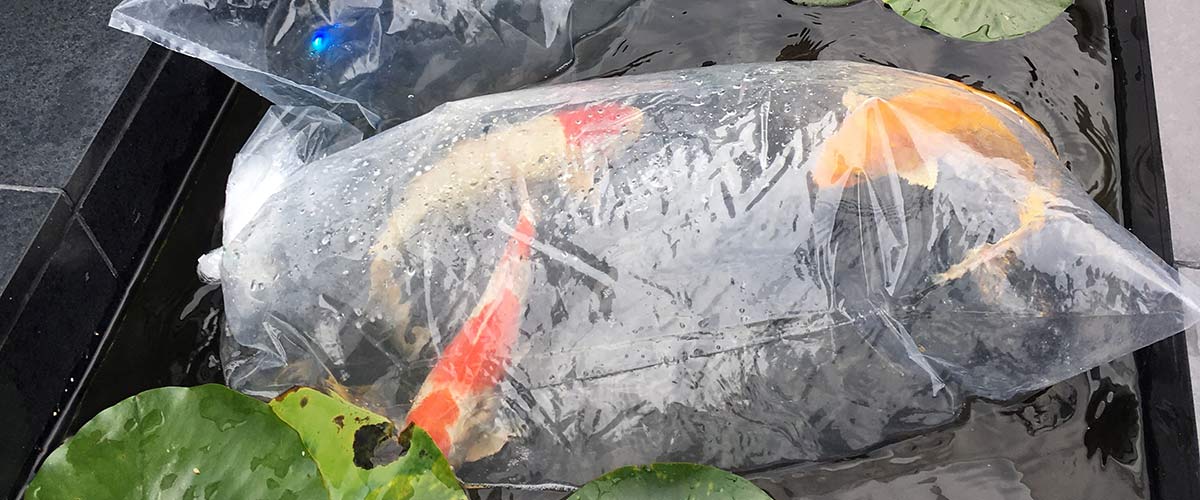Introducing new koi or goldfish to your pond is always an exciting event, however there are a few simple, but important things you should do to ensure that your new fish will settle in to the pond.

When buying koi or goldfish at a retailer, look at the overall health of all the fish in the tank or tub that the fish are in. It is easy to overlook the condition of the other fish in the tub that you are not interested in, but you should look for open sores or ulcers, clamped fins, grey film on the skin etc. If you see any signs of disease on the other fish, seriously consider not buying any fish because it could be the start of a disease outbreak in the tub. Occasionally, you may see one fish that does not appear to be healthy in a tank full of strong, healthy, vigorous fish. In this case, it is likely that it is just the one fish that is weak from shipping, not eating properly or some other non infectious problem. In this situation, it is likely safe to buy your fish, but make sure to quarantine it, before adding it to your pond.
Always ask your retailer how long the fish have been at the store. Many stores that sell fish will receive them one day and sell them the next day. Koi and goldfish need time to recover from the stress of being shipped. During shipping, fish are crowded and stressed and by the time fish reach the store, the water quality in the bag is poor and the oxygen levels are low. At this time the fish are very vulnerable to parasitic and bacterial infections. They need at least a few days to recover from this.
At Hydrosphere Water Gardens – We quarantine all our new fish arrivals a minimum of 2 weeks to allow them to recover from the stress of shipping. We randomly inspect new arrivals microscopically to look for any potential problems such as flukes, ick, costia etc. All new fish are given a series of preventative treatments to ensure there are no disease outbreaks in our systems.
There is no such thing as a fish that is completely free from bacteria or parasites. One way to explain it is – fish live in ‘harmony’ with their environment. Each pond or aquarium is unique, and contains a certain number of unique ‘critters’ (bacteria and parasites). Fish in any given pond adapt to that environment and may be perfectly healthy there for years. Your pond, no matter how healthy your fish are, has different set of ‘critters’, and when you add a new fish it has to adapt to these ‘critters’. Most of the time fish adapt to a new pond without a problem, but occasionally fish don’t react well to the new conditions. This is why quarantining fish is important.
Before introducing new koi to your pond it is best to quarantine them in a separate tub or aquarium. Although it is the last thing most pond keepers want to do, no matter where you buy your koi or goldfish, you should quarantine them for a minimum of 3 weeks. Quarantining new fish allows you to closely monitor their health, and allows them to get used to your ponds unique conditions. By adding pond water to your quarantine tank, your new fish will be gradually introduced to the ‘critters’ that are found in your pond but in a controlled environment. In the worst case, quarantining can save your existing fish population from potentially dangerous viruses such as KVH or SVC. Even a fish that looks perfectly healthy could be carrying a virus but may not show any symptoms for more than 1 week. For more detailed information see our Koi Quarantine Procedures page.
At Hydrosphere Water Gardens – we buy our koi and goldfish from reputable fish farms that are routinely checked for SVC and KVH viruses. Our Japanese Koi shipments arrive with health certificates for each farm.
Adding only a few fish to your pond at a time is not only the safest way for your new fish, but also your existing fish. Adding too many fish at one time, especially to a new pond, can result in poor water quality (high ammonia, nitrite) which almost always leads to fish disease. If you have a small pond, 500 gallons or less, add no more than 6 small fish (3″-4″). If you have a larger ponds you can add 5 or 6 larger fish (5″-6″) etc. Adding a reasonable number of fish allows your biological filter to adapt to the increased waste produced by the new fish and prevent water quality problems.
Once your fish are quarantined, you are ready to add them to your pond. First, make sure the quarantine tank and pond temperatures are fairly close – within 5°C. The best way to introduce fish is to place them in a large bag with the water from their quarantine tank, and float it in your pond for about 15 minutes to allow the temperatures to equilibrate. Then take another 10 to 15 minutes and gradually fill the bag with pond water just in case other parameters such as pH, alkalinity etc are different. Finally, submerge the bag and let the fish swim out when they are ready. For more information, watch an informative video on Acclimating Pond Fish

Watch your fish carefully for the next few weeks. It may take up to a few weeks for a bacterial or parasite problem to show up. Watch your new fish as well as your existing fish in the pond. New fish can bring disease into a healthy established pond.